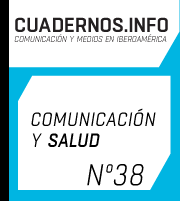Narrativas transmedia y contenidos generados por los usuarios: el caso de los crossovers
DOI:
https://doi.org/10.7764/cdi.38.760Palabras clave:
Crossover, narrativa, transmedia, mashup, fans, Lost, FringeResumen
El objetivo de este artículo es analizar un tipo especial de textualidad: los crossovers. El análisis se focalizará en los contenidos generados por los usuarios de las narrativas transmedia. Para ello, se toman como caso 25 producciones derivadas de dos series televisivas: Lost (ABC, 2004-2010) y Fringe (FOX, 2008-2013). Tras describir el contexto de estas producciones y mapear la etimología del concepto de crossover, se analizan algunas producciones realizadas por fans, aplicando un método basado en la semiótica narrativa y la narratología. Finalmente, se propone una taxonomía de estos formatos, articulada en cuatro ejes: medio, estilo, género y programa narrativo.















